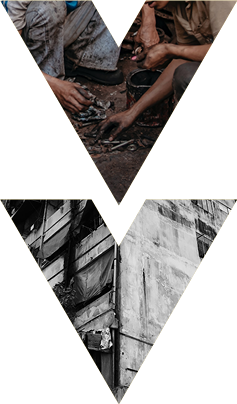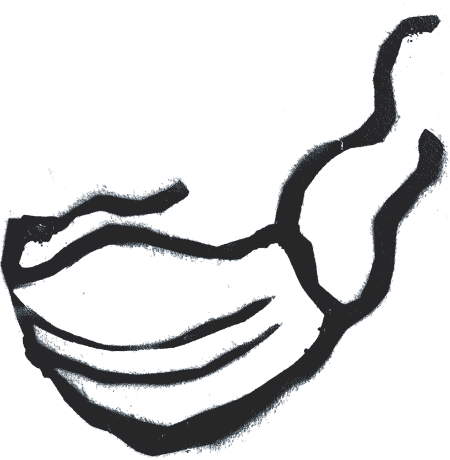Vulnerability,
Human Trafficking
& COVID-19
Responses & Policy Ideas
In the context of victims of trafficking as well as migrant workers, the COVID-19 crisis exacerbates those factors of vulnerability as well as creating barriers to the organisations and government bodies supporting these people. Even with many land borders closed, the trafficking of vulnerable people will continue and may even increase. These increased risks are especially heightened for women and girls.
The effects of the COVID-19 crisis on every level of society are becoming more apparent as we move forward. Many of these effects are not only immediate ones but factors that will have an ongoing effect on how we live, how we travel, and how we work.
One thing that has become clear is that it is society’s most vulnerable groups who are most at risk, from the disease itself, and from the other factors of life it influences.
It is crucial that we find ways to overcome these barriers and put in place policies and procedures that can help both during and after this crisis.
Unemployment and economic hardship
01.
Unemployment during COVID-19 can have devastating effects
Informal, migrant, and trafficked workers are at the bottom of the fragile global supply chain. The domino effect caused by falling consumer demand and rising prices affects these workers more than anyone else. Loss of employment can also mean loss of linked housing or inability to pay rent, leaving these groups even more vulnerable than before. And where formal employment has ceased, there is an increased chance of cross-border trafficking, even where these borders are supposedly closed.
Policy response
- Create funding programmes for these workers or expand access to existing social security programmes.
- Partner with and support employers and other supporting organisations
- Create policies that help stabilise the labour market
Good practice
Thailand has announced that migrant workers already working in the country will be allowed to stay until November with no overstay or other penalties.
0–0million
people may potentially become
unemployed in light of COVID-19
Estimated figures as per press release from the International Labour Organization on 18th March, 2020
Informal workers and vulnerability
02.
For people whose visas depend on their employment status, losing jobs can be tantamount to losing the right to remain in a country
For informal workers, this current crisis can increase their vulnerability to economic hardship and the risk of trafficking. When these workers lose their jobs, they lose income, and they may also lose housing provided with their job. With no income, they cannot afford housing, and with many unable to return home, they are left potentially transient, homeless, and vulnerable. In some cases, females are more likely to lose any employment and be at more risk of trafficking.

Policy response
- Temporarily regularise the status of migrant workers who have become unemployed and are unable to return to their home countries
- Create funding programmes for workers in the informal sector. This can be achieved by expanding access to a country’s existing social protection scheme or by creating standalone programmes for the duration of the COVID-19 crisis
Good practice
Thai supplier of US clothing brand Patagonia reimbursed migrant workers for recruitment fees they were illegally charged by the supplier and agents to obtain work at the garment factory.
Those forced to work and risk
03.
For those trapped in forced labour, whether in agriculture, factories or elsewhere, they may have no choice but to go to work
For many workers, especially those who have been trafficked, they have no choice but to continue working. Women and girls within these groups are more at risk during the COVID-19 crisis than before. Working – and living – conditions are such that the possibility of any infection spreading is extremely high. For sex workers forced to continue working, there is a high risk of transmission from them to clients and vice versa. Trafficked domestic workers are also vulnerable in these situations and may be thrown out if they become ill. These latter two groups are almost predominantly composed of women and girls, further highlighting the greater risk females are exposed to.
Policy response
- Provide guidance to companies remaining open during the crisis. This can include instructing employers on providing personal protective equipment and implementing social distancing policies.
- Create transparent healthcare policies that will cover workers in these sectors should they fall ill.
- Identify where women and girls are most at risk and plan accordingly.
Good practice
Malaysia has agreed not to punish anyone who needs COVID-19 testing, irrespective of their citizenship or migrant status
Children and increased exploitation
04.
Exploitation of children is also predicted to grow
Children have always been the most vulnerable group among migrant and trafficked workers. Increasing economic hardship may see families push children into begging, forced marriage, crime, or child labour. And with online abuse of children already a major problem in the region, the combination of hardship and school closures is likely to see that problem exacerbated. Girls under 16 are at particular risk when it comes to these areas, especially during the current crisis.
Policy response
- Ensure accurate information regarding COVID-19 and their rights is made available to those with low literacy, including children.
- Partner with existing organisations and civil society to provide support and education to children.
- Increase online monitoring in countries where online abuse of children is an issue.
Good practice
UNICEF is making information available online to support accurate and child-friendly communication about COVID-19.
The Alliance for Child Protection in Humanitarian Action has produced a technical note on the protection of children during the COVID-19 pandemic. This is intended to assist policy makers and relevant organisations ensure children’s welfare is at the centre of any responses.
Those forced to work and risk
05.
For already exploited people, trafficked persons among them, some may be pushed further into exploitative circumstances
The lockdown and its effects can make vulnerable groups who have been trafficked or who have been exploited more invisible to the government agencies and organisations who would seek to identify and help them. In some cases, the demand for exploitative work has increased as a direct result of the crisis, particularly in areas such as production of medical supplies across the ASEAN region. Female victims of trafficking are at increased risk during this time and gender-specific policies may offer some added protection.
Policy response
- Relevant government agencies should partner with civil society and other organisations working with migrant and trafficked workers. Ensure information, help, and support are made available
- Remove barriers to accessing healthcare and regularise status of trafficked persons, irregular migrants and asylum seekers.
Good practice
Council of Europe member states are reviewing the status of asylum seekers and irregular migrants.
Information and protection
06.
Trafficked people exist in hidden or marginalised spaces and informal sectors that makes their access even to basic life-saving information challenging
For many migrant workers and trafficked individuals, they face real issues in accessing information or services. The most obvious problem is the language barrier or even a lack of literacy skills. But the very fact that they are often located in hidden or marginalised areas means that any information or support available simply does not reach them. Where needed, such information should be gender-specific to recognise that females are the most vulnerable group of trafficked individuals.
Policy response
- Governments and other stakeholders should ensure that information and services are available in the languages of the target audience.
- They should also look to provide information that will be understandable by those with low or no literacy levels. This may be in the form of verbal communication and government agencies should look to partner with NGOs and other organisations to achieve this.
Good practice
The UNHCR (United Nations High Commissioner for Refugees) is providing information on prevention measures and working with volunteers in Rohingya camps in Bangladesh.
Maritime workers and exploitation
07.
Perhaps no one is harder hit and less visible than those who work at sea
While media attention has focused on people trapped on cruise ships, there has been little coverage of those fishermen and commercial seafarers in the same predicament. With many ports locked down, these workers are trapped at sea and forced to continue working while relief crews are trapped onshore. Many still at sea are forced to work without pay, and many relief crews also face economic hardship. And for those workers who have been trafficked into the fishing industry, there is no protection or support and they are vulnerable to both continued exploitation and to infection.
Policy response
- Governments should adhere to 2006’s Maritime Labour Convention as well as the International Maritime Organisation’s (IMO) recommendations for Governments and relevant national authorities on the facilitation of maritime trade during the COVID-19 pandemic.
- Treat all maritime workers as essential staff.
- Countries should ensure that any vessel under their flag puts measures in place to protect workers.
Good practice
Canada has classified maritime workers as essential and has exempted them from travel restrictions, thus allowing for crew changes.
150,000 people
are estimated to be trapped on board commercial vessels, as of March 2020, being forced to continue working
New York Times, 2020
After trafficking and support
08.
The ugly reality for many people is that their lives may be more precarious outside of trafficking than in it
People may automatically assume that for workers, life after trafficking would be a good thing. But that is not always the case. Not only do they face economic hardship and homelessness, but also increased risk of COVID-19 transmission. And if they do manage to make it home safely, they may face further vulnerability and violence. For those detained in immigration centres or camps, there are also many dangers. Even when removed from initial trafficking, many people, especially females, will remain at high risk of renewed trafficking.
Policy response
- Ensure that any detention centres have strict social distancing procedures or release the detainees and offer them support.
Good practice
Council of Europe member states are reviewing the status of all detained migrants and releasing them where possible.
In conclusion
Society can be measured by how it treats its most vulnerable
Migrant and trafficked workers are most at risk from COVID-19 and its effects. Positive action and policies from ASEAN members can mitigate that risk and make a real difference to thousands of lives.
download report

